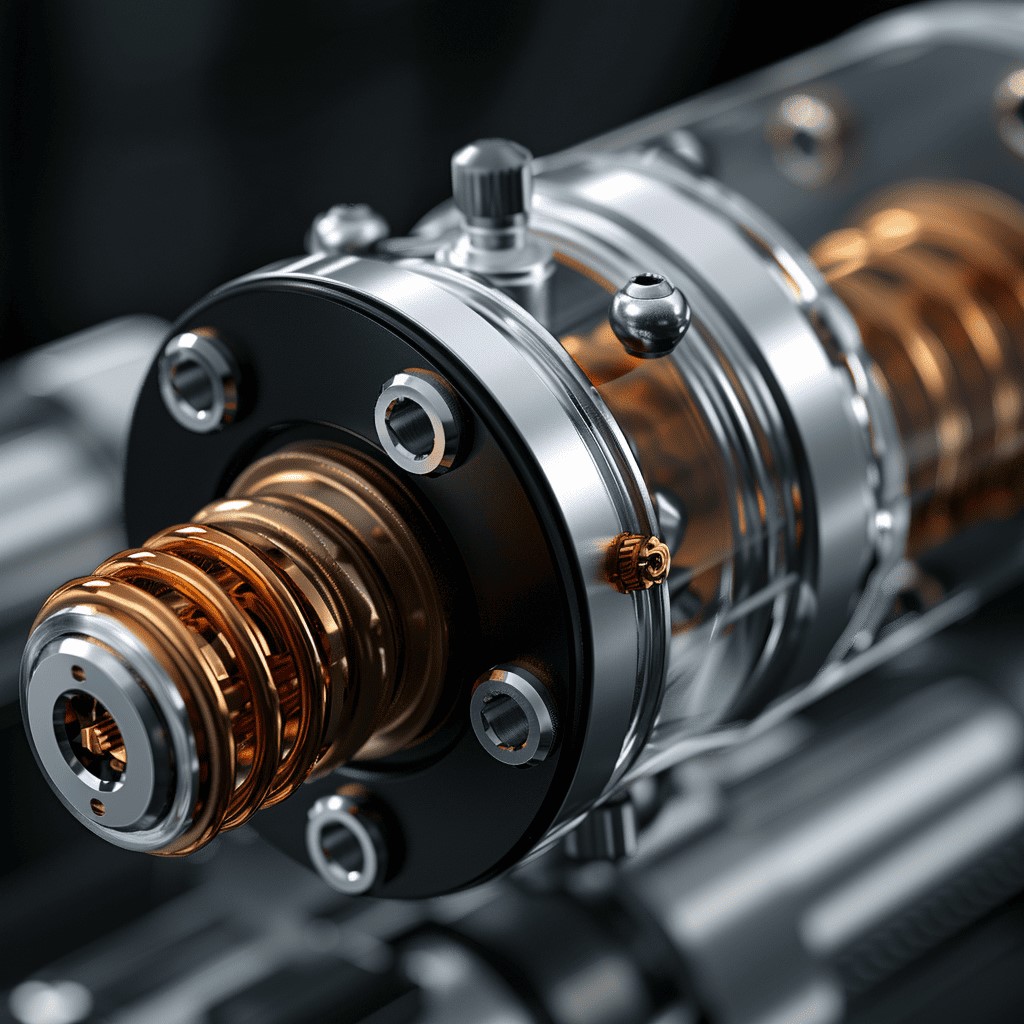Nov 12, 2025
Pnumatic cylinders, also known as air cylinders, are mechanical devices that use compressed air to produce linear or rotary motion. They are among the most common actuators used in industrial automation systems, as they efficiently convert the pneumatic energy of compressed air into mechanical force to perform tasks such as pushing, lifting, clamping, or positioning components.
Among the different types of pneumatic cylinders, the single acting cylinder (SAC) is one of the simplest and most cost-effective designs. As the name suggests, it performs work in one direction only—either extending or retracting—by using compressed air applied to one side of the piston. The return motion is achieved by a spring mechanism or sometimes by an external force, depending on the system's design.
Because of its simplicity, low air consumption, and minimal maintenance needs, the single acting cylinder is widely used in automation, packaging, clamping, and light mechanical operations. It provides reliable linear motion for repetitive tasks where compact size and quick response are more important than high output force.
In this article, we'll explore how a single acting cylinder works, its structure, key advantages, and how it compares to double acting cylinders.
Energy Efficient: Only one side of a single acting cylinder requires air or hydraulic pressure, resulting in lower energy consumption.
Simple and Easy to Maintain: With a built-in spring for return, single acting cylinders have fewer components and a simple structure, making them easy to install and maintain.
Safer and More Reliable: The spring allows the piston to automatically return to its default position when air or hydraulic pressure is lost.
Lower Operating Costs: Fewer components and a simpler design lead to lower initial investment and maintenance costs.
Compact Size: Single acting cylinders are usually compact and lightweight, suitable for applications with limited space.
The working principle of a single acting cylinder is straightforward. Compressed air enters the cylinder through a single port and applies pressure to one side of the piston. This air pressure forces the piston to move in one direction—usually to extend the piston rod—performing the required work, such as pressing, pushing, or lifting a component.
Single acting cylinders are divided into pneumatic and hydraulic types, what is the difference between single and double acting cylinder?The main difference being the type of driving medium used,I will mainly introduce the differences in operation between these two types of single-acting actuators.
When compressed air enters the supply chamber of the cylinder, the piston moves forward, completing the extension stroke. When the air supply is cut off or vented, the built-in spring automatically returns the piston to its original position, achieving reset.
Only one side of the piston is driven by hydraulic oil, while the return stroke relies on a spring or external load. Hydraulic oil enters one side of the piston chamber through the pipeline, pushing the piston rod outward. When the hydraulic oil is released, the piston rod returns to its original position under the force of the built-in spring or the reaction force of the external load.

A double acting actuator refers to one in which both the extension and retraction of the piston rod are powered by air or hydraulic pressure, whereas a single acting actuator has one side of the piston rod driven by air or hydraulic pressure for extension, and the other side returns via a spring or external load. Therefore, to convert a double acting actuator into a single acting one, it is generally sufficient to either block one of the media ports or install a return spring. There are three common methods to achieve this conversion.
Add a Return Spring: Install a spring of appropriate strength at the retraction end of the double acting cylinder. Use the original extension side for air or hydraulic pressure to drive the piston rod outward, and let the spring force handle the retraction, completing the piston rod’s motion cycle.

Block the Return Port: Seal or block the return-side port of the double acting cylinder. Use the extension-side air or hydraulic supply to drive the piston rod outward, while the retraction is accomplished by the spring or the mechanical force of an external load.
Use an External Load: For hydraulic or pneumatic cylinders, if the actuator itself can provide retraction force, the return port can be closed, using only one-way hydraulic or pneumatic supply for extension. The retraction is then performed by the weight of the load or the spring force.
Single-acting actuators operate through single-side air supply with spring return, offering clear advantages such as simple structure, low energy consumption, minimal maintenance, and the ability to automatically return to a safe position in the event of air loss, making them particularly suitable for applications with high safety requirements. Double-acting actuators, on the other hand, are driven by alternating air supply to both sides, providing higher output torque and greater control precision, ideal for control valves and large-diameter valves. Fokca Pneumatic Company offers not only single-acting and double-acting actuators but also a full range of pneumatic products including cylinders, solenoid valves, air preparation units, fittings, positioners, and limit switches, forming a complete valve automation and pneumatic control solution widely used in petrochemical, environmental protection, food processing, water treatment, and equipment manufacturing industries. If needed, you can contact us directly.
You May Interest In
Links: www.fescolo.com(Pneumatic)
FOKCA ©1998-2025 All Rights Reserved Sitemap